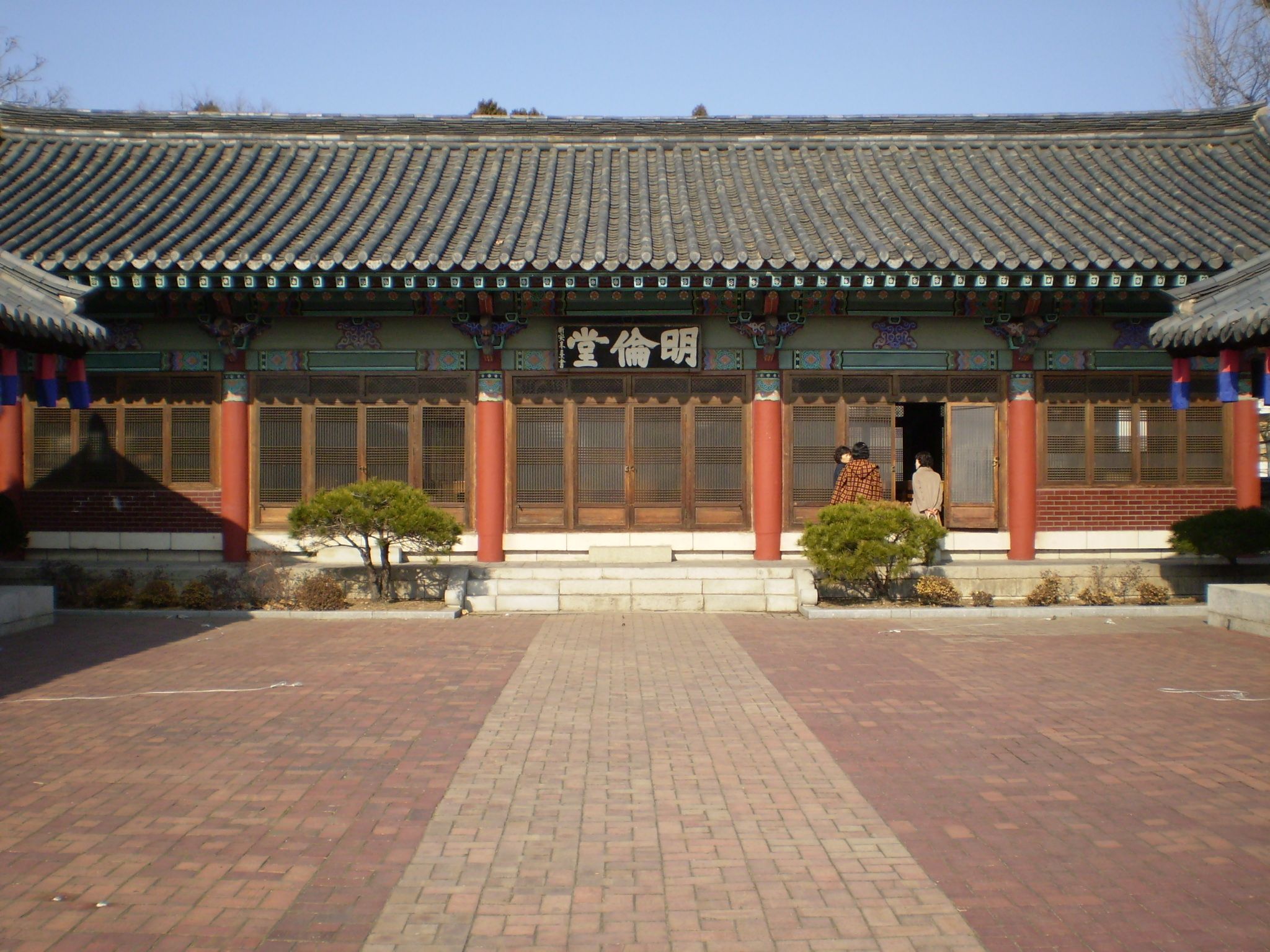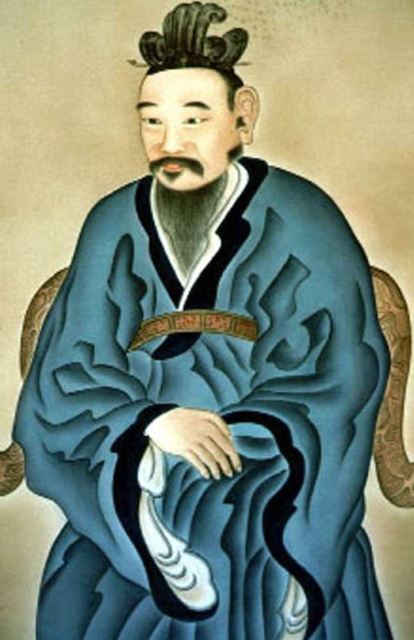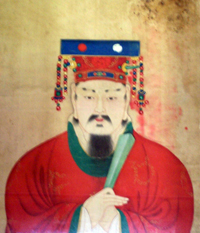|
Choe
Choi is a Korean family surname. As of the South Korean census of 2015, there were around 2.3 million people by this name in South Korea or roughly 4.7% of the population. In English-speaking countries, it is most often anglicized ''Choi'', and sometimes also ''Chey'', ''Choe'' or ''Chwe''. Ethnic Koreans in the former USSR prefer the form ''Tsoi'' (''Tsoy'') especially as a transcription of the Cyrillic Цой. Origin *According to Samguk Sagi, the Gyeongju clan originates from chief Sobeoldori (소벌도리, 蘇伐都利) of Goheochon (고허촌, 高墟村), one of six villages that united to found Silla; The Gyeongju clan traces their origin back to Choi Chiwon (857–10th century), a noted Korean scholar, philosopher, and poet of the late Unified Silla period (668–935). *One theory of origin suggests that Haeju clan's progenitor Choi Choong (최충, 崔沖, 984–1068) was given the surname 崔 during the reign of Goryeo king Mokjong. *The progenitor of the Chungju cla ... [...More Info...] [...Related Items...] OR: [Wikipedia] [Google] [Baidu] |
Choe Bu
Choe Bu (, 1454–1504) was a Korean official during the early Joseon Dynasty. He is most well known for the account of his shipwrecked travels in China from February to July 1488, during the Ming dynasty (1368–1644). He was eventually banished from the Joseon court in 1498 and executed in 1504 during two political purges. However, in 1506 he was exonerated and given posthumous honors by the Joseon court. Choe's diary accounts of his travels in China became widely printed during the 16th century in both Korea and Japan. Modern historians also refer to his written works, since his travel diary provides a unique outsider's perspective on Chinese culture in the 15th century. The attitudes and opinions expressed in his writing represent in part the standpoints and views of the 15th century Confucian Korean literati, who viewed Chinese culture as compatible with and similar to their own. His description of cities, people, customs, cuisines, and maritime commerce along Chin ... [...More Info...] [...Related Items...] OR: [Wikipedia] [Google] [Baidu] |
Choe Chi-won
Choe Chiwon (; 857–10th century) was a Korean philosopher and poet of the late medieval Unified Silla period (668-935). He studied for many years in Tang China, passed the Tang imperial examination, and rose to the high office there before returning to Silla, where he made ultimately futile attempts to reform the governmental apparatus of a declining Silla state. In his final years, Choe turned more towards Buddhism and became a hermit scholar residing in and around Korea's Haeinsa temple. Choe Chiwon was also known by the literary names Haeun "Sea Cloud" ( ), or, more commonly, Goun "Lonely Cloud" ( ). He is recognized today as the progenitor of the Gyeongju Choe clan. Early life and study in Tang Choe Chiwon was born in the Saryang district of the Silla capital of Gyeongju in 857. He was of the so-called "head rank six" (''yukdupum'' ) class, a hereditary class in Silla's stringent bone rank system affixed to those of mixed aristocratic and commoner birth. As a member of ... [...More Info...] [...Related Items...] OR: [Wikipedia] [Google] [Baidu] |
Choi Chi-won
Choe Chiwon (; 857–10th century) was a Korean philosopher and poet of the late medieval Unified Silla period (668-935). He studied for many years in Tang China, passed the Tang imperial examination, and rose to the high office there before returning to Silla, where he made ultimately futile attempts to reform the governmental apparatus of a declining Silla state. In his final years, Choe turned more towards Buddhism and became a hermit scholar residing in and around Korea's Haeinsa temple. Choe Chiwon was also known by the literary names Haeun "Sea Cloud" ( ), or, more commonly, Goun "Lonely Cloud" ( ). He is recognized today as the progenitor of the Gyeongju Choe clan. Early life and study in Tang Choe Chiwon was born in the Saryang district of the Silla capital of Gyeongju in 857. He was of the so-called "head rank six" (''yukdupum'' ) class, a hereditary class in Silla's stringent bone rank system affixed to those of mixed aristocratic and commoner birth. As a member of ... [...More Info...] [...Related Items...] OR: [Wikipedia] [Google] [Baidu] |
Goryeo
Goryeo (; ) was a Korean kingdom founded in 918, during a time of national division called the Later Three Kingdoms period, that unified and ruled the Korean Peninsula until 1392. Goryeo achieved what has been called a "true national unification" by Korean historians as it not only unified the Later Three Kingdoms but also incorporated much of the ruling class of the northern kingdom of Balhae, who had origins in Goguryeo of the earlier Three Kingdoms of Korea. The name "Korea" is derived from the name of Goryeo, also spelled Koryŏ, which was first used in the early 5th century by Goguryeo. According to Korean historians, it was during the Goryeo period that the individual identities of Goguryeo, Baekje, and Silla were successfully merged into a single entity that became the basis of modern-day ' Korean' identity. Throughout its existence, Goryeo, alongside Unified Silla, was known to be the "Golden Age of Buddhism" in Korea. As the state religion, Buddhism achieved its ... [...More Info...] [...Related Items...] OR: [Wikipedia] [Google] [Baidu] |
Gyeongju
Gyeongju ( ko, 경주, ), historically known as ''Seorabeol'' ( ko, 서라벌, ), is a coastal city in the far southeastern corner of North Gyeongsang Province in South Korea. It is the second largest city by area in the province after Andong, covering with a population of 264,091 people (as of December 2012.) Gyeongju is southeast of Seoul, and east of Daegu. The city borders Cheongdo and Yeongcheon to the west, Ulsan to the south and Pohang to the north, while to the east lies the coast of the Sea of Japan. Numerous low mountains—outliers of the Taebaek range—are scattered around the city. Gyeongju was the capital of the ancient kingdom of Silla (57 BC – 935 AD), which ruled about two-thirds of the Korean Peninsula at its height between the 7th and 9th centuries, for close to one thousand years. Later Silla was a prosperous and wealthy country, and its metropolitan capital of Gyeongju was the fourth largest city in the world. A vast number of archaeological s ... [...More Info...] [...Related Items...] OR: [Wikipedia] [Google] [Baidu] |
Choe Chung
Choe Chung (984–1068) was a Korean Confucian scholar and poet of the Haeju Choe clan during the Goryeo Goryeo (; ) was a Korean kingdom founded in 918, during a time of national division called the Later Three Kingdoms period, that unified and ruled the Korean Peninsula until 1392. Goryeo achieved what has been called a "true national unifica ... period. He has been called the grandfather of the Korean educational system.Yang, Key P. and Gregory Henderson, 1958, "An Outline History of Korean Confucianism: Part I: The Early Period and Yi Factionalism,"''The Journal of Asian Studies'' 18 (1): 81-101: https://www.jstor.org/stable/2941288. Family *Father: Choe On (최온, 崔溫) **1st son: Choe Yu-seon (최유선, 崔惟善) **2nd son: Choe Yu-gil (최유길, 崔惟吉) **Daughter: Lady Choe (부인 최씨, 夫人 崔氏) ***Son-in-law: Gim Seong-su (김성수, 金成洙) References Korean Confucianists 984 births 1068 deaths Korean educators Choe clan of Haeju ... [...More Info...] [...Related Items...] OR: [Wikipedia] [Google] [Baidu] |
Gyeongju Choe Clan
The Gyeongju Choe clan () is a Korean clan, with a bon-gwan located in Gyeongju, North Gyeongsang Province. According to a census from 2015, the population of the Gyeongju Choe clan is 945,005 in South Korea. The apical ancestor of the Gyeongju Choe clan is Choe Chiwon, a Confucian scholar and official during the Unified Silla period. See also * Choi (Korean surname) Choi is a Korean family surname. As of the South Korean census of 2015, there were around 2.3 million people by this name in South Korea or roughly 4.7% of the population. In English-speaking countries, it is most often anglicized ''Choi'', an ... References Choe clans Choe clan of Gyeongju {{Korea-stub ... [...More Info...] [...Related Items...] OR: [Wikipedia] [Google] [Baidu] |
Korea
Korea ( ko, 한국, or , ) is a peninsular region in East Asia. Since 1945, it has been divided at or near the 38th parallel, with North Korea (Democratic People's Republic of Korea) comprising its northern half and South Korea (Republic of Korea) comprising its southern half. Korea consists of the Korean Peninsula, Jeju Island, and several minor islands near the peninsula. The peninsula is bordered by China to the northwest and Russia to the northeast. It is separated from Japan to the east by the Korea Strait and the Sea of Japan (East Sea). During the first half of the 1st millennium, Korea was divided between three states, Goguryeo, Baekje, and Silla, together known as the Three Kingdoms of Korea. In the second half of the 1st millennium, Silla defeated and conquered Baekje and Goguryeo, leading to the " Unified Silla" period. Meanwhile, Balhae formed in the north, superseding former Goguryeo. Unified Silla eventually collapsed into three separate states due ... [...More Info...] [...Related Items...] OR: [Wikipedia] [Google] [Baidu] |
South Korea
South Korea, officially the Republic of Korea (ROK), is a country in East Asia, constituting the southern part of the Korea, Korean Peninsula and sharing a Korean Demilitarized Zone, land border with North Korea. Its western border is formed by the Yellow Sea, while its eastern border is defined by the Sea of Japan. South Korea claims to be the sole legitimate government of the entire peninsula and List of islands of South Korea, adjacent islands. It has a Demographics of South Korea, population of 51.75 million, of which roughly half live in the Seoul Capital Area, the List of metropolitan areas by population, fourth most populous metropolitan area in the world. Other major cities include Incheon, Busan, and Daegu. The Korean Peninsula was inhabited as early as the Lower Paleolithic period. Its Gojoseon, first kingdom was noted in Chinese records in the early 7th century BCE. Following the unification of the Three Kingdoms of Korea into Unified Silla, Silla and Balhae in the ... [...More Info...] [...Related Items...] OR: [Wikipedia] [Google] [Baidu] |
Haeju
Haeju () is a city located in South Hwanghae Province near Haeju Bay in North Korea. It is the administrative centre of South Hwanghae Province. As of 2008, the population of the city is estimated to be 273,300. At the beginning of the 20th century, it became a strategic port in Sino-Korean trade. Haeju has chemical-related enterprises and a cement factory. History The area around Haeju is known to have been inhabited since the Neolithic period, as shellmounds, pottery, and stone tools have been found at Ryongdangp'o. During the early Three kingdoms period, it was briefly governed by a small chieftain, when it was known as "Naemihol" (). In 757, however, it was conquered by the Goguryeo kingdom, who later lost it to Silla. It was under the Goryeo dynasty's King T'aejo that it received its current name. Sohyon Academy (소현서원) was a Confucian academy founded near Haeju by the famous scholar Yi I (1536–84) after his retirement. It is situated in Unbyong Valley, a part of ... [...More Info...] [...Related Items...] OR: [Wikipedia] [Google] [Baidu] |
Nakrang Kingdom
Nakrang Kingdom (Hangul: 낙랑국, Hanja: 樂浪國) was a kingdom located in the northwestern part of the Korean Peninsula according to ''Samguk Sagi''. The kingdom's independence, however, is debated. According to the ancient Korean record of ''Samguk Sagi'', the King of Nakrang named Choi Ri (Hangul: 최리, Hanja: 崔理) met the Prince Hodong of Goguryeo and let him marry his daughter, the Princess of Nakrang. When Prince Hodong asked the princess to break drums and horns in the Nakrang's armory to prevent the kingdom's guards from alerting the attack by Goguryeo, the princess followed Hodong's instructions, leading to Nakrang being conquered by Goguryeo. Dispute regarding independence The view regarding Nakrang's independence is disputed. While Chinese and Japanese scholars claim that the name Nakrang actually refers to the Lelang Commandery of China's Han dynasty and Choi Ri was Lelang's governor rather than a King, Korean scholars often view Nakrang as an independent ... [...More Info...] [...Related Items...] OR: [Wikipedia] [Google] [Baidu] |



